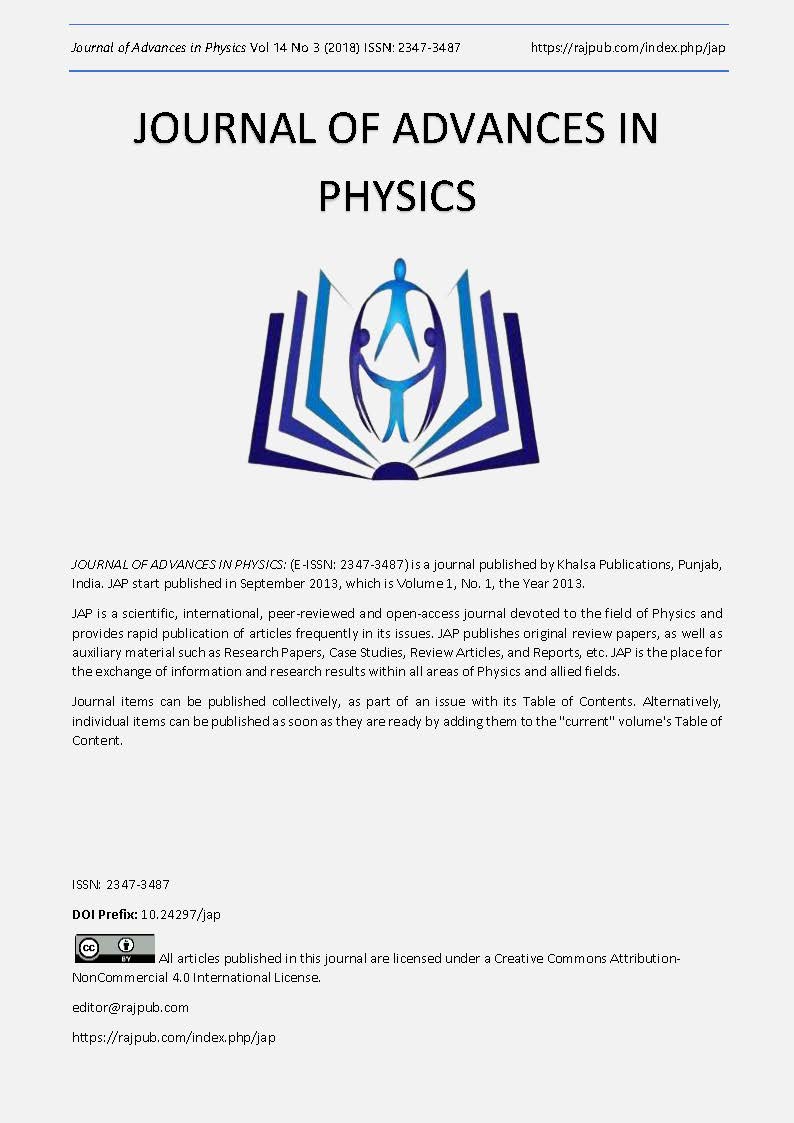Influence of Alloying Additives on The Adhesive Properties of Steels: Atomic Level Simulation
DOI:
https://doi.org/10.24297/jap.v14i3.7601Keywords:
molecular dynamics, galling, Vanadium, Titanium and adhesionAbstract
In the present work we report atomistic molecular dynamics simulation results on adhesion force between self-mated iron/iron, iron/vanadium, iron-cementite and iron/titanium surfaces has been determined and we found that iron/cementite surface exhibits lower adhesive force than that of iron/iron surface. The results showed that adhesion, quantified by the work of adhesion, decreased as the vanadium content increased and highest reduction was obtained for 10 at.% vanadium and 7.5 at.% for titanium. Furthermore, the variation of adhesion force with temperature was studied in the temperature range between 300-700 K and we found that the adhesive force generally is lowered at higher temperature.
Downloads
References
A. Gåård, P. Krakhmalev, J. Bergström, Wear mechanisms in deep drawing of carbon steel – correlation to laboratory testing, Tribotest. 14 (2008) 1–9. doi:10.1002/tt.49.
A. Gåård, P.V. Krakhmalev, J. Bergström, N. Hallbäck, Galling resistance and wear mechanisms – cold work tool materials sliding against carbon steel sheets, Tribol. Lett. 26 (2007) 67–72. doi:10.1007/s11249-006-9186-5.
A. Gåård, P. Krakhmalev, J. Bergström, J. Hirvonen Grytzelius, H.M. Zhang, Experimental study of the relationship between temperature and adhesive forces for low-alloyed steel, stainless steel, and titanium using atomic force microscopy in ultrahigh vacuum, J. Appl. Phys. 103 (2008) 124301. doi:10.1063/1.2938844.
A. Gåård, Influence of tool microstructure on galling resistance, Tribol. Int. 57 (2013) 251–256. doi:10.1016/j.triboint.2012.08.022.
Fe-V - EVOCD, (n.d.). https://icme.hpc.msstate.edu/mediawiki/index.php/Fe-V (accessed August 7, 2018).
B.-J. Lee, A modified embedded-atom method interatomic potential for the Fe–C system, Acta Mater. 54 (2006) 701–711. doi:10.1016/j.actamat.2005.09.034.
H.-K. Kim, W.-S. Jung, B.-J. Lee, Modified embedded-atom method interatomic potentials for the Fe–Ti–C and Fe–Ti–N ternary systems, Acta Mater. 57 (2009) 3140–3147. doi:10.1016/j.actamat.2009.03.019.
M.C. Goncalves, F. Margarido, eds., Materials for Construction and Civil Engineering: Science, Processing, and Design, Springer International Publishing, 2015. //www.springer.com/gp/book/9783319082356 (accessed August 12, 2018).
S. Plimpton, Fast Parallel Algorithms for Short-Range Molecular Dynamics, J. Comput. Phys. 117 (1995) 1–19. doi:10.1006/jcph.1995.1039.
A. Stukowski, Visualization and analysis of atomistic simulation data with OVITO–the Open Visualization Tool, Model. Simul. Mater. Sci. Eng. 18 (2010) 015012. doi:10.1088/0965-0393/18/1/015012.
L. Vitos, K. Larsson, B. Johansson, M. Hanson, S. Hogmark, An atomistic approach to the initiation mechanism of galling, Comput. Mater. Sci. 37 (2006) 193–197. doi:10.1016/j.commatsci.2005.08.006.
S. Wei, J. Zhu, liujie Xu, Effects of vanadium and carbon on microstructures and abrasive wear resistance of high speed steel, Tribol. Int. 39 (2006) 641–648. doi:10.1016/j.triboint.2005.04.035.
K. Lee, S. Lee, Y. Kim, H.S. Hong, Y. Oh, S. Kim, The effects of additive elements on the sliding wear behavior of Fe-base hardfacing alloys, Wear. 255 (2003) 481–488. doi:10.1016/S0043-1648(03)00155-8.
X. Qi, Z. Jia, Q. Yang, Y. Yang, Effects of vanadium additive on structure property and tribological performance of high chromium cast iron hardfacing metal, Surf. Coat. Technol. 205 (2011) 5510–5514. doi:10.1016/j.surfcoat.2011.06.027.
Y.K. Singla, D.K. Dwivedi, N. Arora, On the modeling of dry sliding adhesive wear parameters of vanadium additive iron-based alloys at elevated temperatures, Surf. Coat. Technol. 283 (2015) 223–233. doi:10.1016/j.surfcoat.2015.10.078.
J. Song, D.J. Srolovitz, Adhesion effects in material transfer in mechanical contacts, Acta Mater. 54 (2006) 5305–5312. doi:10.1016/j.actamat.2006.07.011.
P.L. Piotrowski, R.J. Cannara, G. Gao, J.J. Urban, R.W. Carpick, J.A. Harrison, Atomistic Factors Governing Adhesion between Diamond, Amorphous Carbon and Model Diamond Nanocomposite Surfaces, J. Adhes. Sci. Technol. 24 (2010) 2471–2498. doi:10.1163/016942410X508208.
A. Gåård, Wear mechanisms in sheet metal forming: Effects of tool microstructure, adhesion and temperature, Karlstad University, 2008.
D.J. Siegel, L.G. Hector, J.B. Adams, Adhesion, stability, and bonding at metal/metal-carbide interfaces: Al/WC, Surf. Sci. 498 (2002) 321–336. doi:10.1016/S0039-6028(01)01811-8.
A. Arya, E.A. Carter, Structure, bonding, and adhesion at the TiC(100)/Fe(110) interface from first principles, J. Chem. Phys. 118 (2003) 8982–8996. doi:10.1063/1.1565323.
P.A. Romero, G. Anciaux, A. Molinari, J.F. Molinari, Friction at the tool–chip interface during orthogonal nanometric machining, Model. Simul. Mater. Sci. Eng. 20 (2012) 055007. doi:10.1088/0965-0393/20/5/055007.
Y. Guo, Y. Liang, Atomistic simulation of thermal effects and defect structures during nanomachining of copper, Trans. Nonferrous Met. Soc. China. 22 (2012) 2762–2770. doi:10.1016/S1003-6326(11)61530-6.
Downloads
Published
How to Cite
Issue
Section
License
 All articles published in Journal of Advances in Linguistics are licensed under a Creative Commons Attribution 4.0 International License.
All articles published in Journal of Advances in Linguistics are licensed under a Creative Commons Attribution 4.0 International License.




